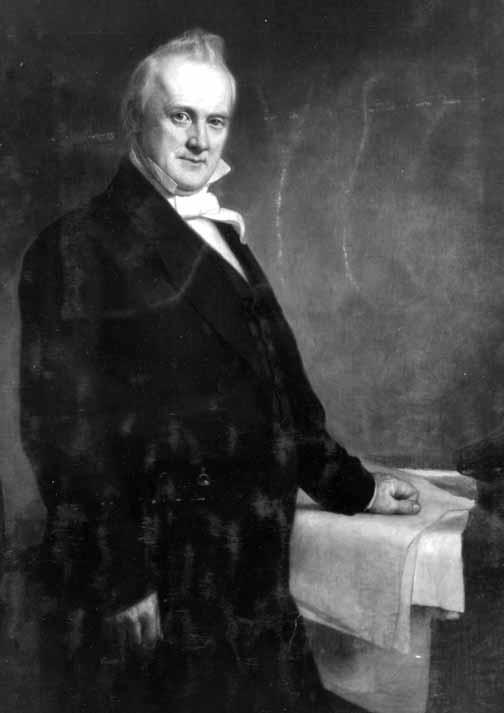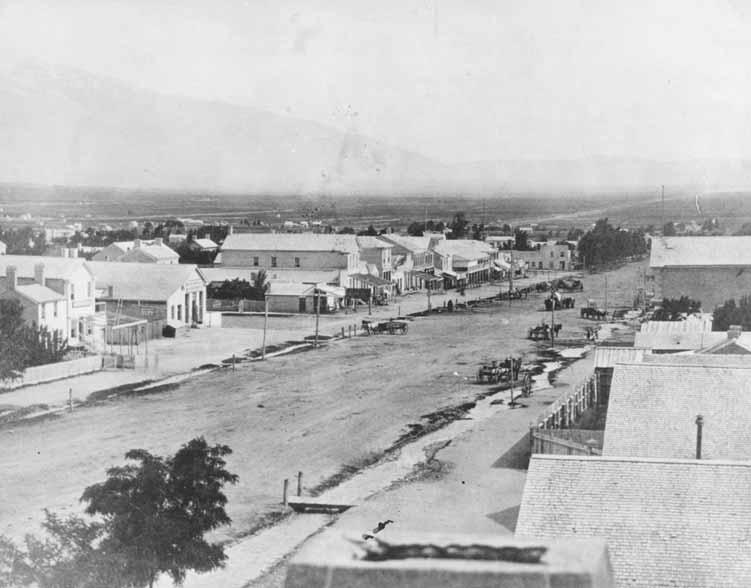
4 minute read
In This Issue
Few events highlight Utah’s unique nineteenth century history as does the Utah War of 1857-58 when federal troops were dispatched to Utah to put down an alleged Mormon rebellion, restore law and order, reestablish the authority of the United States government, and begin the process to “Americanize” the inhabitants of the far-off valleys of Utah.
The soldiers under the command of Colonel Albert Sidney Johnston and the new civilian government under Alfred Cumming, Brigham Young’s replacement as territorial governor, did have an impact on Utah in the late 1850s.However,whether or not Utah needed to be Americanized, what it meant to be Americanized, and when the process was completed are subjects that have engaged Utah historians for decades. Historians have found manifestation of this Americanization process in many examples: the decision to abandon the practice of polygamy; statehood for Utah; the adoption of a progressive constitution for the new state; the emergence of national political parties in the state; its educational institutions; the expansion of mining; wholehearted acceptance of capitalism; a more pragmatic view of society pushing out the communal and utopian ideas of earlier years; participation by Utahns in the Spanish-American War, Philippine insurrection, Mexico border campaign, and World War I; and a greater acceptance of national trends in literature, music, amusements, and, to be sure, the American pastime — baseball.

Members of the Utah Expedition rest at a warm campfire following a hard day’s march into Utah in April 1858.
LIBRARY OF CONGRESS, UTAH STATE HISTORICAL SOCIETY
Our first article examines the conduct of the Nauvoo Legion in response to the march of federal soldiers to Utah in 1857.The article concludes that the harassment of supply trains, the extensive defense preparations in Echo Canyon, and the success of the militia in holding the federal army in Wyoming during the winter of 1857-58 were essential measures in buying time to conduct negotiations that prevented violence and bloodshed that would have occurred had the army attempted to force its way into the Salt Lake Valley. At the same time, the federal force started late, was badly managed, sent with insufficient supplies, and its interim leader, Colonel Edmund B. Alexander, operated without any explicit orders on how to deal with Mormons and fearful of censure from superiors should any Mormons be killed.
John I. Ginn, the subject of our second article, came west with the Utah Expedition. Under the protection of Orrin Porter Rockwell, he reached Salt Lake City from Fort Bridger in the fall of 1857.With a pass from Brigham Young and escorted by Jacob Hamblin, Ginn and his party traveled through Mountain Meadows eight weeks after the tragic massacre and arrived at San Bernardino, California in December 1857.Several decades later Ginn wrote an account of his experiences–an account used by historians of the Utah War and Mountain Meadows Massacre. The context, history, strengths, and limitations of this account offer important insights for students of the tumultuous Utah War period and in the use of accounts penned long after the events they describe.
Tony Lazzeri came to Utah in 1922 under circumstances vastly different than those for John Ginn in 1857.An Italian-American from San Francisco, Lazzeri came as a professional baseball player for the Salt Lake Bees. During the 1925 season he hit sixty home runs, still a Pacific Coast League record. Two years later,Babe Ruth hit the same number of home runs as a player for the New York Yankees. Lazzeri left Salt Lake City in 1926 to join Babe Ruth and the New York Yankees taking with him a nickname “Poosh em up Tone” coined by Salt Lake fans that would go with him all the way to baseball’s Hall of Fame.
Another Italian-American baseball professional, Tommy Lasorda, arrived in Ogden in 1966,four decades after Lazzeri’s departure from Utah. During his three years in Ogden Lasorda managed a number of future major leaguers including many he would coach again during his twenty-year career as manager of the Los Angeles Dodgers. Like Lazzeri, Lasorda was elected to the Hall of Fame and has become a baseball legend. Our last article offers a delightful glimpse of Lasorda and rookie league baseball in Ogden during the 1960s.






